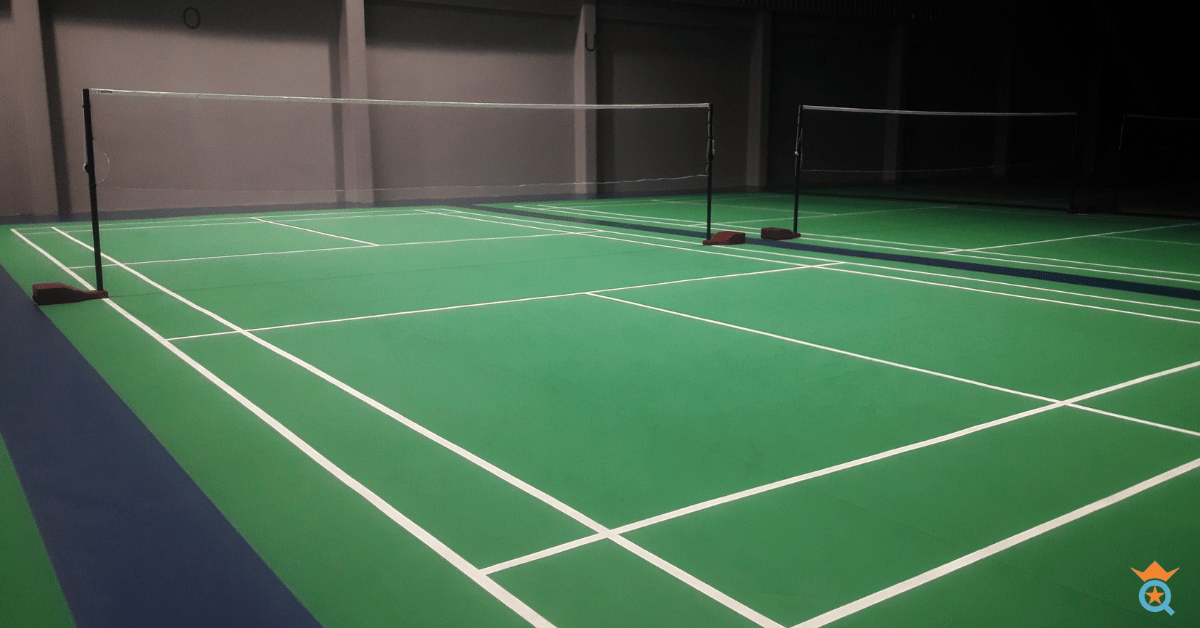Enter the adrenaline-fueled world of badminton where agility, strategy, and precision meet. Whether you're a beginner or a pro, understanding the rules of singles and doubles is essential to succeed in the game.
This guide is your ultimate roadmap as you navigate through intense rallies and strategic serves. It delves deep into the core guidelines to sharpen your skills and refine your strategy, ultimately leading to victory.
Get ready to dominate the court with this comprehensive treasure trove of knowledge.

The Badminton Court
Singles vs. Doubles Court
Playing badminton, whether singles or doubles, begins with understanding the court layout. The badminton singles court includes the area within the inner lines and is narrower compared to a doubles court. The doubles court includes the outermost lines, forming a slightly larger playing field.
Service Courts
Service courts in singles are narrower compared to the wider and shorter service courts in doubles. The doubles court is split by the center line, forming the right and left court for service. Players serve from and receive in their half-court. Understanding the court boundaries and service lines can significantly improve your gameplay.

Rules for Serving in Badminton Singles
Initial Serve
In singles play, the game commences with the server starting from the right service court. This initial serve sets the pace for the rest of the match.
Service Court Based on Server’s Score
The server's score plays a significant role in determining the respective service court for the service. If the server has an even score, they serve from the right service court. Conversely, with an odd score, they serve from the left service court.

Badminton Doubles Service Rules
Playing doubles in badminton requires a nuanced comprehension of the doubles service rules.
The Starting Serve
The initial serve follows the same rules as in singles, starting from the right service court. The score determines the choice of the service court - right for an even score and left for an odd score.
Order of Service
Service in a doubles game progresses as follows:
- From the original server who initiated the game from the right service court,
- To the partner of the first receiver,
- Then to the partner of the initial server,
- Followed by the initial receiver,
- And finally back to the initial server, and so on.
In doubles play, no player on the receiving side should receive two consecutive serves in the same game. Any service court errors should be corrected immediately. As long as they do not obstruct the server or receiver's sightline, players can choose any position on their court.

Scoring System
Irrespective of singles or doubles, points are earned by the team (either serving or receiving) that wins the rally. A rally is a series of shots exchanged until the shuttlecock lands on the ground, hits the net, or crosses the court boundaries.
The team that first reaches 21 points, ensuring a minimum lead of two points, wins the game. A match typically consists of three games.
After each game, players switch sides, ensuring fairness. In the subsequent game, any player from the winning side can serve, and any player from the losing side can receive.

The Bottom Line
Understanding the rules of badminton singles and doubles can significantly enhance the competitiveness and enjoyment of the game. So, whether you are playing singles or a doubles match - be it men's doubles, women's doubles, or mixed doubles - grasp your badminton rackets and get ready to ace the game!
FAQs: Quick Answers to Your Badminton Queries
How do you play doubles and singles in badminton?
In singles badminton, one player competes against another, utilizing the narrower singles court. In contrast, doubles badminton involves two teams of two players each, with the match taking place on a wider doubles court. The service rules vary slightly between singles and doubles, influencing the flow of the game.
What is the difference between singles and doubles in badminton?
The primary differences lie in the number of players and court dimensions. Singles involve a one-on-one contest on a narrower court, while doubles involve four players (two teams) on a wider court. Additionally, the service rotation and strategy differ between singles and doubles.
How do you score in doubles badminton?
In doubles badminton, a point is scored by the side that wins a rally, regardless of whether they served or received. The first team to reach 21 points with a minimum two-point lead wins the game.
Can a single badminton player play doubles?
Yes, a single player can participate in a doubles match provided they have a partner. However, playing doubles requires different strategies and an understanding of the doubles service rules, making it a distinct experience from singles play.
What is the difference between singles and doubles badminton?
Aside from the number of players and the size of the court, the gameplay strategy and service rules differ significantly between singles and doubles. Singles play emphasizes individual skill and stamina, while doubles play focuses more on teamwork, coordination, and strategy.
What are the rules of singles and doubles in badminton?
The rules of singles and doubles vary, particularly around serving and scoring. In singles, the server serves from the right or left service court based on their score. In doubles, the service also starts from the right court, but the rotation involves all four players. Scoring is consistent in both formats, with the side winning a rally earning a point.
What is the difference between singles and doubles games?
The difference lies in the number of players, court size, and gameplay strategy. Singles involve one-on-one competition on a narrower court, focusing on individual skill and stamina. Doubles involve a two-on-two match on a wider court, emphasizing teamwork, coordination, and understanding of shared space.
Are singles harder than doubles badminton?
It depends on individual preferences and skills. Singles demand more physical stamina and individual skill as one player covers the entire court. In contrast, doubles require good coordination, faster reactions, and a better understanding of shared space, adding a layer of complexity. Thus, both formats have their unique challenges.
Armed with these insights into the rules of badminton singles and doubles, you're all set to get on the court and experience the electrifying sport of badminton! Whether it's a game of singles, a doubles match, or a mixed doubles challenge, make sure to embrace the strategic beauty of the game and enjoy every rally!








